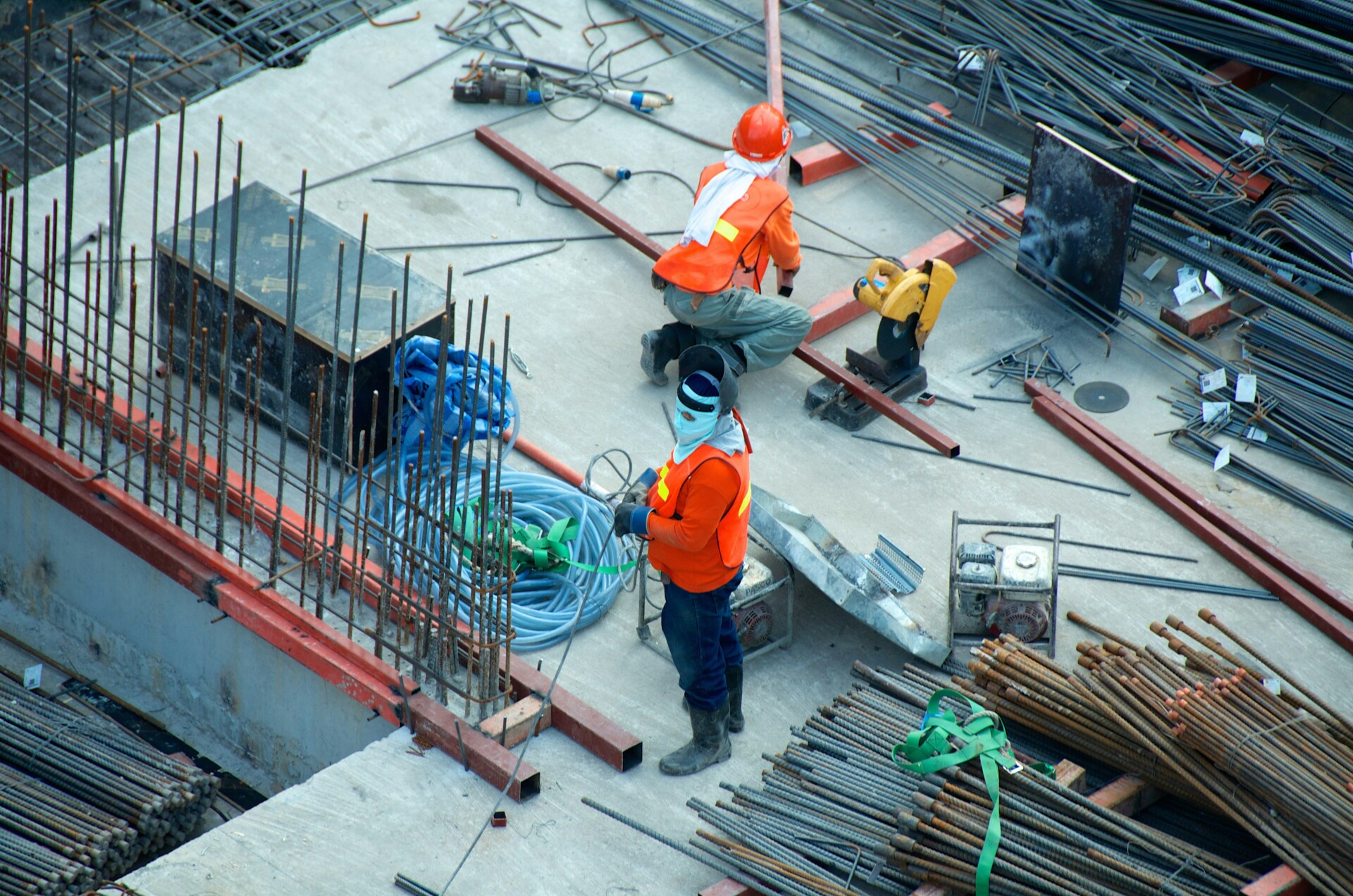Construction closeout documents are the essential collection of papers and forms required to formally complete a construction project and hand it over to the owner. These crucial records provide owners with the necessary information and tools to successfully manage and maintain their new building. For contractors, they serve as proof that work was completed to the satisfaction of both the owner and manufacturers.
At EB3 Construction, we understand the important role these documents play in the project lifecycle. Successfully delivering a complete set requires diligent planning, meticulous organization, and clear communication from day one. Our team views closeout documentation as a continuous process, rather than a last-minute task.
Effective closeout documentation benefits all parties involved. Owners gain the resources to operate their facility efficiently, while contractors demonstrate the quality of their work and protect themselves from future disputes. With careful management, the closeout process can enhance client relationships and pave the way for future collaborations.
What Are the Essential Construction Closeout Documents?

As general contractors, we understand that the closeout process can be overwhelming due to the extensive documentation required. However, having a clear grasp of the essential closeout documents and their purposes helps us manage this crucial phase more effectively. While specific requirements vary based on the project type, location, and intended use, there are several key document categories we typically include in our closeout packages:
As-Built and Redline Drawings
We provide two crucial types of drawings that document the final state of construction:
- As-built drawings: These show the final construction details, incorporating all changes made during the project. They serve as the definitive record of what was actually built.
- Redline drawings: These document why and when changes occurred throughout construction. They offer valuable context and history behind project modifications.
Together, these drawings give owners and facility managers an accurate representation of the completed structure for future reference and maintenance.
Warranties
We include two main types of warranties:
- Workmanship warranties: These are provided by us and our subcontractors, guaranteeing the quality of our work for a specified period (typically one year).
- Manufacturer warranties: These cover equipment and materials installed in the project, often for extended periods.
Warranties protect the owner’s investment and clarify responsibilities for addressing any issues that may arise after project completion.
Certificates
Two critical certificates are part of our standard closeout package:
- Certificate of Occupancy: Issued by local authorities, this certifies the building is safe and legal to occupy.
- Certificate of Substantial Completion: This document, often signed by both owner and contractor, indicates the project is sufficiently complete for its intended use.
Financial and Legal Documents
We provide several documents to ensure financial closure and protect all parties:
- Lien waivers: These verify that all payments have been made to subcontractors and suppliers, protecting the owner from potential claims.
- Final pay applications: These document the final financial status of the project.
Project Completion Records
To demonstrate thorough completion of all contracted work, we include:
- Punch lists: These itemize any remaining minor tasks, with acknowledgments that each item has been addressed.
- Change orders: We provide a complete record of all approved modifications to the original scope, including associated costs and timeline impacts.
Operation and Maintenance Information
To support the long-term care of the facility, we compile:
- Operation and maintenance (O&M) manuals: These provide detailed instructions for all installed equipment and systems.
- Training documentation: We often include records or videos of any owner team training sessions conducted on complex systems.
By meticulously organizing and delivering these essential closeout documents, we ensure a smooth transition from construction to occupancy and ongoing building management. Our comprehensive approach not only fulfills contractual obligations but also lays the foundation for the project’s long-term success.
| Document Type | Description |
|---|---|
| As-Built Drawings | Show the final construction details, incorporating all changes made during the project. |
| Redline Drawings | Outline why and when changes occurred throughout construction. |
| Workmanship Warranties | Issued by contractors and subcontractors, guaranteeing work quality for a specific period. |
| Manufacturer Warranties | Cover equipment and materials installed in the project for extended periods. |
| Certificate of Occupancy | Verifies that the building is safe and legal to occupy. |
| Certificate of Substantial Completion | Indicates that the project is sufficiently complete for its intended use. |
| Lien Waivers | Verify that all payments have been made, protecting the owner from potential claims. |
| Final Pay Applications | Document the final financial status of the project. |
| Punch Lists | Itemize any remaining minor tasks and acknowledges their completion. |
| Change Orders | Record all approved modifications to the original project scope, costs, and timeline impacts. |
| Operation and Maintenance Manuals | Provide detailed instructions for all installed equipment and systems. |
| Training Documentation | Records or videos documenting training sessions for complex systems. |
How Pre-Construction and During-Construction Documents Factor into Closeout
At EB3 Construction, we recognize that successful project closeout begins long before the final stages of construction. Many essential closeout documents originate in the pre-construction and construction phases, forming a critical foundation for the closeout process.
During the pre-construction phase, we meticulously compile key documents that establish the project’s framework and serve as important reference points during closeout. These include:
- Bid documents outlining project specifications and pricing
- Pre-construction meeting minutes capturing initial agreements and objectives
- Insurance certificates verifying appropriate coverage
- Bonding documents ensuring financial protection
- Permits and approvals demonstrating regulatory compliance
As construction progresses, we systematically generate and organize crucial documentation, including:
- Commissioning reports validating system performance
- Change orders detailing scope modifications
- Daily construction reports chronicling on-site activities
- RFI logs tracking information requests and responses
- Material and equipment submittals confirming specifications
- Progress payment applications documenting financial milestones
- Inspection reports verifying code compliance
We ensure all these documents undergo a rigorous submittal process for approval, maintaining meticulous organization throughout the project. This approach allows us to efficiently compile the final closeout package, avoiding last-minute scrambles and ensuring a comprehensive record of the project’s evolution.
By treating documentation as an ongoing priority rather than an end-of-project task, we streamline the closeout process and provide our clients with a thorough, well-organized project archive. This proactive approach not only facilitates a smoother handover but also serves as a valuable resource for future building operations and maintenance.
What Challenges Exist in Collecting and Managing Closeout Documents?

The collection and organization of closeout documents present significant challenges for construction teams. We know from experience that tracking the immense amount of documentation generated throughout a project’s lifecycle—from initial plans to final punch lists—can quickly become overwhelming.
In large, lengthy projects, the volume of paperwork multiplies exponentially. Without proper systems in place from the beginning, contractors often find themselves scrambling in the final months to gather critical documentation scattered across various team members, subcontractors, and even physical job sites.
Some key challenges we commonly encounter include:
- Subcontractors completing work years before closeout, yet their documentation remains essential
- Lack of standardized filing systems across project stakeholders
- Physical documents getting lost or damaged on-site
- Difficulty tracking down specific records when needed for inspections or approvals
- Version control issues with multiple document iterations
Unfortunately, disorganized document management frequently leads to closeout delays, withheld payments, and frustration for all parties involved. The repercussions can damage relationships and impact a contractor’s reputation and ability to secure future work.
To avoid these pitfalls, we recommend implementing robust organizational systems and cloud-based document storage solutions from the outset of each project. Taking a proactive approach to documentation throughout construction—rather than waiting until the last moment—is key to a smooth closeout process.
While it requires diligence and consistent effort, maintaining accessible, up-to-date records pays dividends when it comes time to close out the project and hand over to the client. The investment in proper document management ultimately saves time, reduces stress, and helps ensure timely final payment.
How Should Construction Closeout Documents Be Delivered?
At EB3 Construction, we understand the vital importance of delivering closeout documents in a format that is easily accessible and well-organized for project owners. While printed materials in three-ring binders were once the industry standard, digital delivery is becoming increasingly common and preferable for many clients.
Regardless of whether we provide physical or digital documentation, our team ensures that closeout packages are:
- Comprehensive – containing all necessary project information
- Intuitively organized – with a clear structure and navigation
- Consistently labeled – using standardized naming conventions
- Easily searchable – allowing for quick location of specific details
We prioritize clarifying document organization and delivery preferences with owners before project initiation. This approach allows us to tailor our strategy to each client’s needs from the start. Our project managers work closely with owners to determine the ideal format and structure for their closeout package.
For digital delivery, we use cloud-based document management systems that enable secure access and straightforward navigation. Files are organized into logically structured folders with descriptive names, simplifying the process for owners to locate information about building systems, warranties, and other essential details. We can also provide searchable PDFs with bookmarks and hyperlinks to improve usability.
When physical documentation is preferred, we prepare professionally bound binders with clear section dividers, a detailed table of contents, and tab labels for easy reference. The same organizational principles apply to ensure owners can quickly find what they need.
Our goal is to provide a ‘handover document’ or ‘turnover package’ that serves as a comprehensive yet accessible resource for the building’s entire lifecycle. We recognize that owners may need to quickly retrieve specific information years after project completion, so we structure our deliverables with that in mind.
By prioritizing effective document organization and delivery, we empower our clients to efficiently manage and maintain their facilities long after construction is complete. This commitment to usability and accessibility is one of the ways we strive to exceed expectations and build lasting partnerships with the developers and property owners we serve.
| Criteria | Physical Delivery | Digital Delivery |
|---|---|---|
| Comprehensiveness | Bound binders with section dividers | Cloud-based document management |
| Organization | Table of contents and tab labels | Folders with descriptive names |
| Accessibility | Physical access required | Accessible from anywhere with internet |
| Usability | Manual search through binders | Searchable PDF files with hyperlinks |
Best Practices for Managing Construction Closeout Documents

Effective management of closeout documents is critical for a smooth project completion. At EB3 Construction, we have found that planning for closeout from day one is essential. We start by carefully reviewing contract specifications and clearly understanding what documentation each subcontractor needs to provide. This proactive approach allows us to collect important items like warranties, manuals, and other critical paperwork while subcontractors are still actively involved on-site.
Our team has developed a robust organizational system that keeps documentation collected throughout the construction process readily accessible when needed for closeout. We leverage project management software to streamline tasks like tracking change orders, developing action plans visible to all stakeholders, and automatically generating submittals. By treating closeout as an ongoing process rather than a last-minute scramble, we’re able to maintain better relationships with clients and receive final payments in a timelier manner.
By taking a systematic approach to closeout documentation, contractors can reduce stress, avoid delays, and deliver a more complete package to owners. This not only facilitates a smoother handover process but also helps build the trust and professionalism that leads to repeat business. While managing closeout documents requires diligence, the long-term benefits for both contractors and owners make it well worth the effort.
For guidance on optimizing your construction closeout process, contact the experienced team at EB3 Construction. We’re here to help you complete projects efficiently and position your business for continued success.




